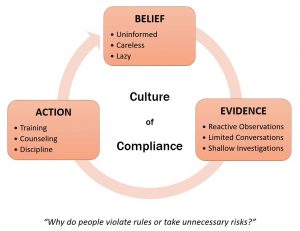 “The toolbox topic for today is chemical safety,” the supervisor said as he looked down at the information sheet he was holding. “The first group of chemicals we will review are known as acids. Strong acids have a pH that is significantly less than 7. Some examples include…”
“The toolbox topic for today is chemical safety,” the supervisor said as he looked down at the information sheet he was holding. “The first group of chemicals we will review are known as acids. Strong acids have a pH that is significantly less than 7. Some examples include…”
With this introduction, the warehouse crew in the room immediately tuned out. Some looked at the ceiling. Some stared at their shoes. Some even took a quick peek at their cell phones.
Too often, we view safety conversations as simply something that has to be done. We know these conversations are a responsibility of any leader. However, when we talk with employees about safety, our conversations are often reactive and seldom well-planned.
If a safety meeting is conducted where the primary goal of the leader is to “check the box” for a required training, the response is predictable. When employees realize the objective, there is no engagement. Most attendees stare blankly or watch the clock. Group meetings such as these should not even be considered as “conversations.” They have almost no impact in terms of engagement, learning, or mindset.
In this article, we will discuss three essential attributes for proactive safety conversations to have a positive impact. Think of these as the 3 P’s of an effective proactive conversation:
- Principled
- Prevalent
- Personalized







